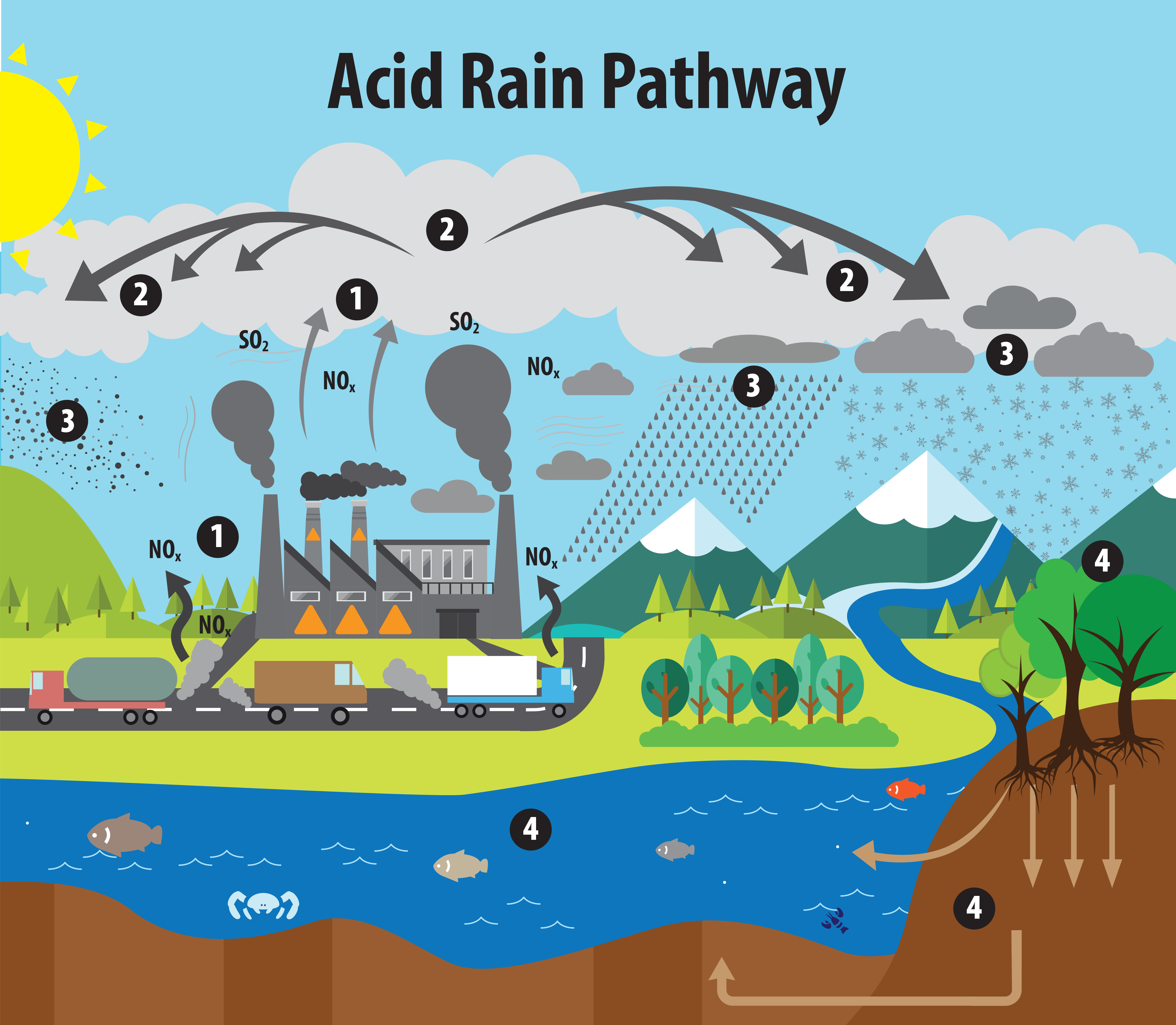Acid rain: its effects and ways to tackle the problem

/trees-killed-by-acid-rain-56c8e0273df78cfb378c4aee.jpg)
- PROBLEM DESCRIPTION
Acid rain is formed when air pollutants such as SO2 and nitrogen oxides NOX, accumulate in the atmosphere and react with its components (water vapour, oxygen) to form acidic components, sulphate (H2SO4) and nitric acid (HNO3), which are deposited on the earth’s surface in dry (dust) form, particles) or in liquid form (rain, snow) through meteorological precipitation, affecting soil, vegetation cover, and the water surfaces of lakes and rivers, as well as buildings and cultural heritage. Acid rain often has a pH of less than 4, which is more than 10 times more acidic than normal rain, which has a pH of between 5 and 6.
Since acid rain can be transported through atmospheric circulation (winds) away from pollution sources to other areas, it has been identified by the UN as one of the most important transboundary pollution problems.
These pollutants (SO2, NOX) are produced from natural sources (mainly volcanoes) and anthropogenic sources through the combustion of fossil fuels (oil, petrol). In particular, the main anthropogenic sources include electricity generation, industry, the movement of old technology cars that consume fossil fuels and oil refineries.
The induced change in pH due to acid rain changes the composition of soil and water by increasing their acidity, causing catastrophic effects on ecosystems (flora and fauna), eroding the structural materials of buildings and monuments containing carbonates (limestone rocks, marble) and reducing visibility (smog formation) and affecting human health by causing respiratory, dermatological and other problems.

- PROPOSED SOLUTION
Tackling the problem of acid rain requires cooperation between States and action by citizens. The solution involves implementing measures to reduce anthropogenic emissions of the pollutants that cause it. In particular, these include:
α) Limitation of the use of fossil fuels and penetration of renewable energy sources (wind, solar, geothermal, hydroelectric, etc.); b) Installation of special filters in factories to capture pollutants; c) Removal of sulphur from fuels containing it; d) Establishment of maximum limits for pollutants in the atmosphere of urban areas; e) Establishment of a system for monitoring pollutants; f) Development of sustainable mobility by citizens (use of bicycles, public transport, electromobility, etc.); g) Provision of financial incentives for businesses to use environmentally friendly technologies; e) use of economic instruments (taxation of polluting activities, trade in pollutant rights, etc.); f) Covering monuments and maintenance and restoration work on affected monuments.
The restrictions imposed relate to issues of cooperation between the States involved in the negotiations to resolve them.

- CONSEQUENCES OF THE IMPLEMENTATION OF THE SOLUTION
The implementation of the above-mentioned solutions and the adoption of the required measures by the majority of countries (EU, USA, Canada) has a positive impact on the solution of the problem and contributes to solving other critical environmental and climate problems. Furthermore, measures such as sustainable mobility have only positive impacts on the urban environment, such as reducing smog, while the implementation of solutions is a one-way street to protect the Cultural Heritage from erosion phenomena.
Although objections are raised as to the short-term economic impact of the solutions (cost of switching from fossil fuels to renewable energy sources, cost of pollution capture equipment), the benefits in the long term are many times greater, if one takes into account the contribution to solving the issue of climate change and the development of new sectors in the context of the green economy as a pillar of sustainable development. All national governments, public and private organisations and citizens must work in this direction in order to achieve a collective ‘green consciousness’.
